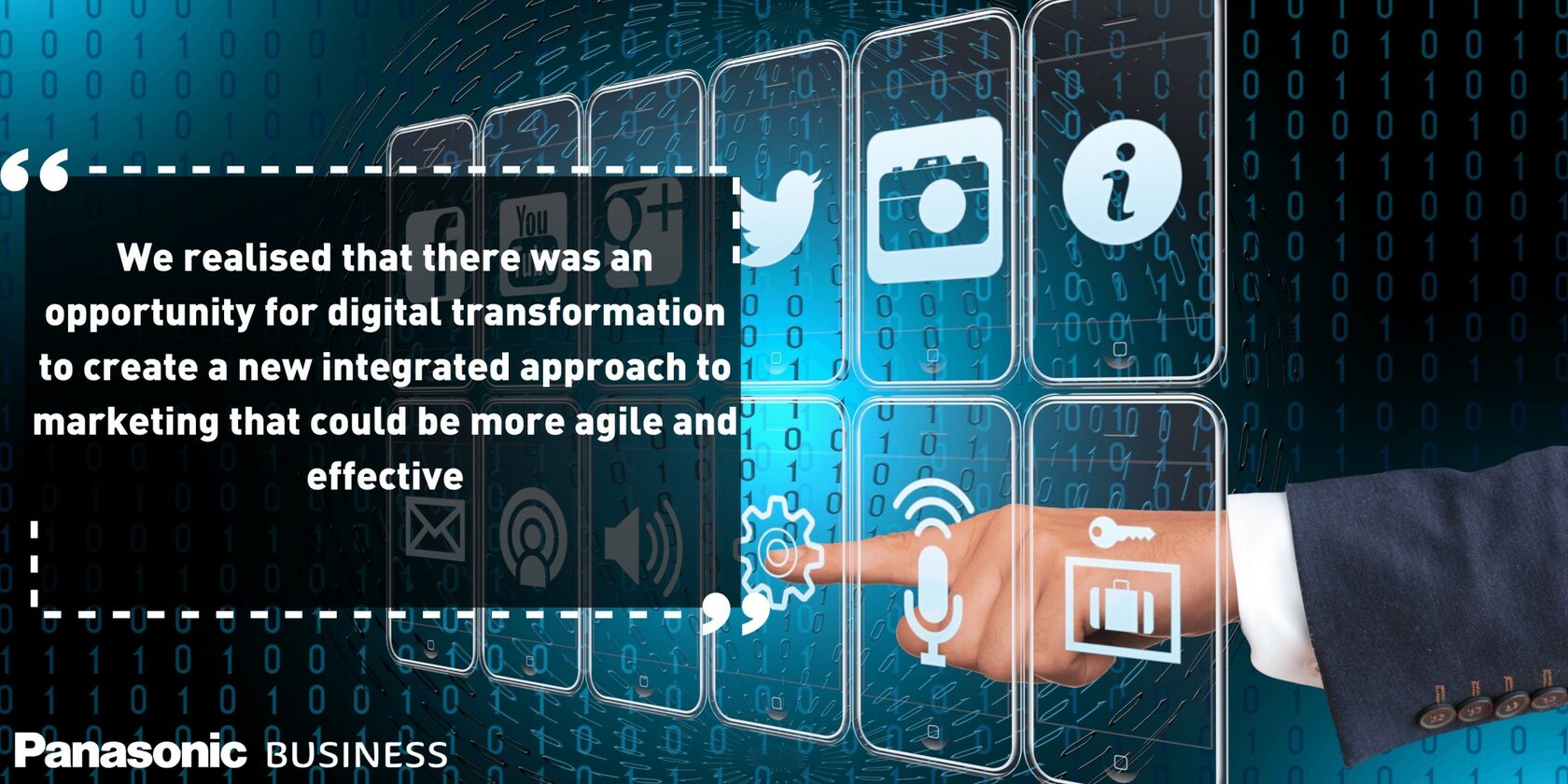Breadcrumb
"Adapting to a world without face-to-face events has sparked a digital transformation in marketing. The traditional reliance on the annual calendar of key exhibitions and conferences, backed by direct marketing has almost disappeared and a positive new digital hybrid approach is emerging."

Marketing Director
Panasonic Connect Europe
The events of the past year have shaken up the world of business to business marketing. The traditional reliance on the annual calendar of key exhibitions and conferences, backed by direct marketing has disappeared and a positive new digital hybrid approach is emerging.
A digital transformation
Even as the business world begins to open back up to travel and the first events are beginning to take place, it’s hard to imagine a quick return to our old ways. Moving forward, people are going to need a very compelling reason to board a flight to travel to an event or a meeting. That’s not to say it won’t happen; we will still want to meet but I think we are more likely to attend a regional event – rather than travel internationally. I believe we will see a hybrid evolution towards a smaller number of regionally held, in-person or hybrid events and a continuing trend of evermore sophisticated online marketing to fill the sales funnel with business opportunities.

It’s a transition that was already underway at Panasonic Business before the pandemic but one that has accelerated rapidly over the past 15 months. At first, it was out of necessity. Like many organisations, we looked to fill the sales pipeline by moving our marketing activities online and we had to adapt very quickly. We learned fast, for example, that trying to replicate the exact same face-to-face event experience in the online world was not going to work. Our first sessions were long and the overall event experience was lacking. But as we adapted and looked closely at new technologies, we realised that there was an opportunity for digital transformation to create a new integrated approach to marketing that could be more agile and effective.
At the heart of this transformation is the digital events platform. After extensive research and discussions we chose to partner with Hopin. It’s a world away from a traditional webinar and brings the online event experience to life for audiences, allowing us to go some way to recreating the experience of meeting in person with interactive video presentations, meeting rooms and break-out sessions, and online exhibition stands.
Alongside this we have strengthened and optimised our digital marketing activity, creating more content through specialised blogs, optimising our video content on YouTube and bringing more personality to our brand by using personal opinion-led content from across our different business division leaders. We have also invested in our own deep-learning translation tool creating an ever growing in-house word memory pool to speed and reduce costs in turning content into multiple languages and taking it to market.
As well as the online transformation, we have also used the time to invest in and to integrate our physical showrooms in Munich, Wiesbaden, Bracknell and other cities to make them capable of delivering immersive events in-person and online. The state-of-the-art new Customer Experience Centre (CXC) in Munich is over 6,000 square metres and can be used to invite customers, trade partners, developers, start-ups, and universities for valuable insights. These facilities have also been replicated as digital twins, with the help of virtualisation software, allowing virtual 3D tours and walk arounds for those unable to attend in-person. Additionally, our rich broadcast and visual solutions experience and wide product line-up helped us to open physical broadcast studios within our organisation. These can be used to create television-standard video productions, high quality live streams and product demonstrations for our customers.
We are creating an environment where prospective customers can interact with Panasonic on their own terms – face-to-face or online – and receive the same professional and personalised response.
Still challenges to overcome
Of course, there are numerous implications and challenges to these marketing transformations that we and many other organisations are still working through. For example, measuring the effectiveness of using these methods to generate leads and conversions.
In the old days, prospective customers would often attend a live event having already carried out a lot of their research and with a solution in mind. The purpose of attending the event would be to speak to sales people on the stand or have a sales meeting to discuss a particular project. With online events , it’s possible they are attracting prospective customers that are much earlier on that buyer journey - still fact-finding and researching possible solutions. As a result, our expectations about the number of quality of leads and how we follow-up on those attending virtual events might need to change. Instead of an expectation of immediate sales funnel impact, we see early signs that online event contacts take more time and need to be carefully nurtured and lead scored before handed over to sales.
There are also implications for marketing budgets. At first glance, attending less large scale events and conferences and moving virtual may seem like a way to cut costs but the reality is that online events also require a very high level of production quality to attract and maintain the attention of today’s target audience. Their expectations have risen and so have the costs of producing immersive content to meet those expectations. Comparing online to live events might still show some cost savings – particularly by not needing to invest in expensive physical stands at major exhibitions – but it’s still too early to say whether this will result in any major overall savings for the marketing budget when ultimately measured against effectiveness such as ROI, lead conversion or created sales pipeline.
Lastly, the pressures and expectations on our sales and marketing professionals have also risen. Our presenters in their virtual studios have to be more like television hosts than traditional sales and marketing people and investment in their training and communications skills needs to accelerate to help them connect with their audience in this new hybrid world.

Experience the extensive Panasonic variety connected at one location: The Panasonic Campus Munich.
Read more insights…
blog
Connecting Our Customers to Tomorrow: A New Era for Panasonic Connect Europe
In today’s dynamic business landscape, transformation is no longer a choice. It’s a necessity.
blog
Navigating Change: How Technology Can Power European Business Transformation
European organisations face a challenging 2025 with an uncertain socio-economic backdrop but there are also incredible opportunities being delivered by the latest technologies, explains Shusuke Aoki, new CEO & Managing Director at Panasonic Connect Europe. Now is the time to be bold and grasp that technological opportunity.
whitepaper
Integrating Generative AI into Sales
Until the public release of ChatGPT in November 2022, the debate about the impact of generative AI on work was largely academic. In the short time since its launch, the discussion has become very real. Generative AI is changing the way people work – and fast.
blog
The Future of B2B Marketing Requires a New Marketer
The last industrial revolution changed the way we work forever. The next one is happening right now. But this time, it’s not about steam engines or assembly lines. It’s about artificial intelligence (AI) and its power to reshape B2B marketing as we know it.
Sorry there was an error...
The files you selected could not be downloaded as they do not exist.
You selected items.
Continue to select additional items or download selected items together as a zip file.
You selected 1 item.
Continue to select additional items or download the selected item directly.
Share page
Share this link via:
Twitter
LinkedIn
Xing
Facebook
Or copy link: